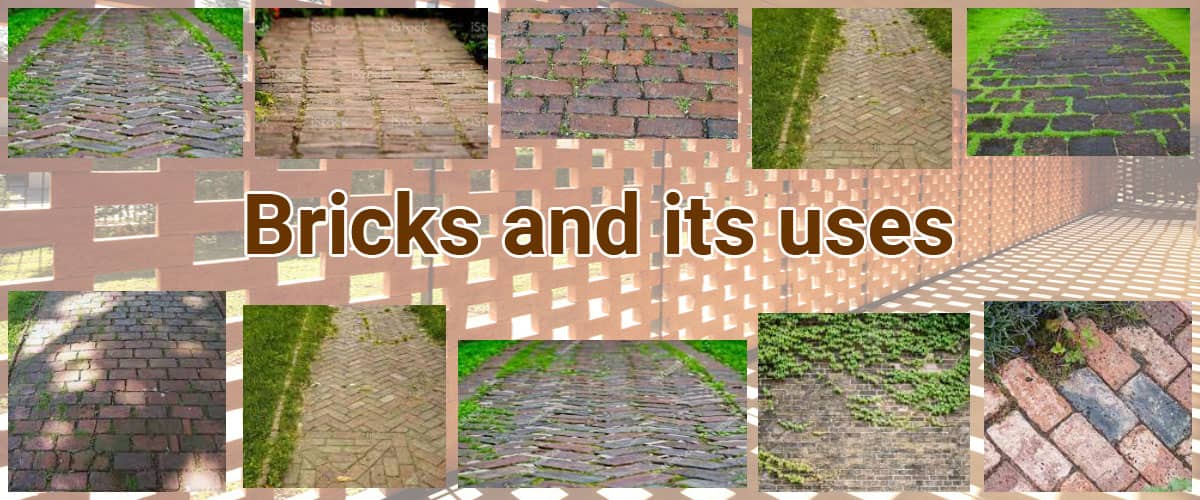Bricks and its Uses

The brick is a solid unit of building which has a standard weight and size whose history can be traced back thousands of years nearly 7500 BCE. The fired clay makes the clay bricks. The composition of clay differs. Silica, alumina, lime, iron, manganese, sulfur, and phosphates of different proportions make the clay. The average density of clay bricks is 125pcf. By grinding and crushing clay in mills and mixing them with water to make it plastic, after which the plastic clay is molded, dried, and finally fired to form the brick.
The shades of bricks depend on the fire temperature during manufacturing, some are dark red, dark brown, dull brown. The temperature for firing varies from 900°C to 1200°C (1650°F to 2200°F).
What are the uses of bricks?
It can be used as a Structural Unit
Clay bricks or burnt bricks are inevitably strong, durable, resistant to abrasion and fire, hard, which is why they are used as a structural material in various structures:
- Buildings
- Bridges
- Foundations
- Arches
- Pavement (Footpath, Streets)
- Brick Flooring
It can be used as an Aesthetic Unit/Surface Finish
To achieve different surface designs bricks can be used in different colors, sizes and orientations. Following is the list of places where bricks can be used as an aesthetic material:
- In Pavements
- As Facing Brick
- For Architectural Purposes
- As a Fire-Resistant Material
Advantages of Bricks
- Economical (Raw material is easily available)
- It is hard and durable
- For ordinary construction compressive strength is good enough.
- Different surface textures can be achieved with different orientations and sizes.
- Maintenance cost is very low.
- It is very easy to demolish brick structures, which makes it less time consuming and therefore economic.
- Reusable and Recyclable.
- Highly fire-resistant.
- During manufacturing process, it produces less environmental pollution.
Disadvantages of Bricks
- Construction takes time.
- It cannot be used in high seismic zones.
- When not exposed to air it causes fluorescence as bricks absorb water very easily.
- Tensile strength is low
- Mold growth might start on the rough surfaces if not cleaned properly.
- Cleaning brick surfaces is a hard job.
- Due to exposure to sun for a long time the color of low-quality bricks changes.
